#american visionary art museum
Explore tagged Tumblr posts
Text

Recovery, by Anonymous
From the American Visionary Art Museum
This lone figure was carved from a single apple tree trunk. It was created as a self-portrait by a British mental patient who had a distinctive concave chest from years of tuberculosis. His doctor remembered that he took no interest in making art until he encountered a fallen apple tree during a walk on the hospital grounds and asked for help in dragging it indoors and getting simple carving tools. At that time, there was hospital prohibition for mental patients handling what could be 'lethal' instruments. However, Edward Adamson, a pioneer in using art to treat mental illness, persuaded the authorities to relax this rule, and trust the patient. The result, 'Recovery,' was a vindication of Edward's remarkable insight. For a month, the patient whittled the wood down to this figure. The artist, in his thirties, committed suicide about two years after leaving the hospital. This applewood figure is his only known work of art.
Source
#anonymous artist#anonymous art#outsider art#recovery#mental health#art therapy#sculpture#american visionary art museum#absolutely haunting in person
247 notes
·
View notes
Text
For #WorldGorillaDay 🦍:

Dean Millien
Tin Thing Gorilla, 2011
Aluminum foil
On display at last year’s “ABUNDANCE: Too Much, Too Little, Just Right” at AVAM
#animals in art#animal holiday#gorilla#primate#World Gorilla Day#Dean Millien#sculpture#contemporary art#American Visionary Art Museum
8 notes
·
View notes
Text
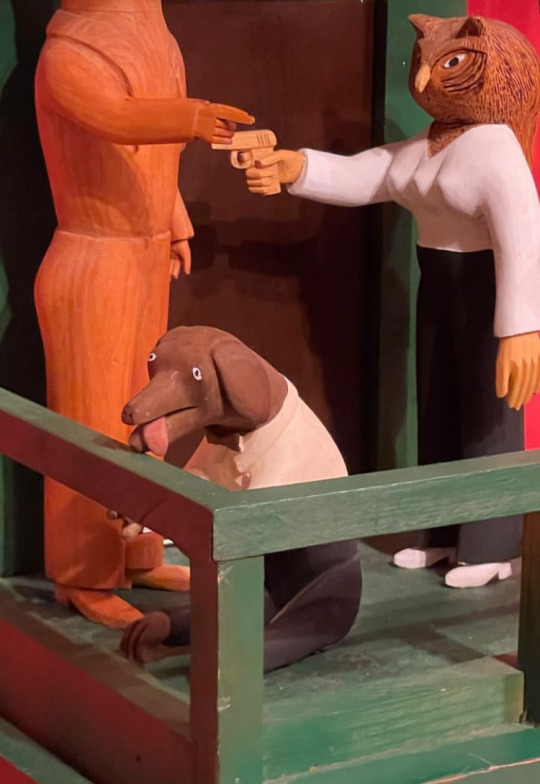
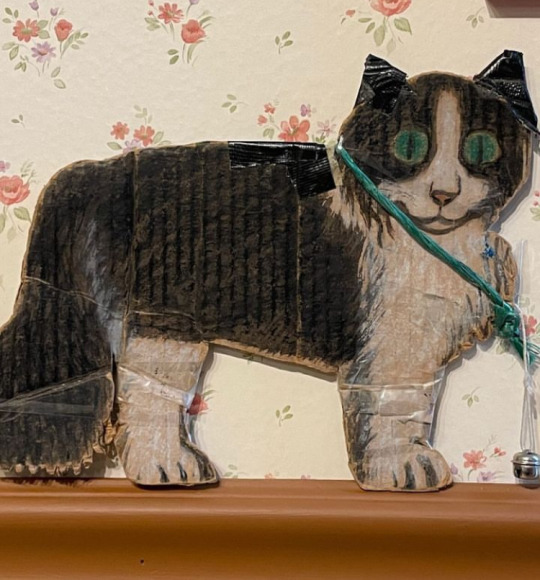
#repost @the_avam American Visionary Art Museum (Baltimore, Maryland, USA). I do not know the details of this work but appreciate the canine and feline representation. Thanks to @robwilsonwork for the tip and the photo.
#gato#perro#cat#chien#dog#hond#hund#katze#chat#folk art#self taught artist#dogs in art#animals in art#American visionary art museum#cats in art#museum#museum exhibit
9 notes
·
View notes
Text
youtube
" The moon was shining, and it drew my attention.
He showed me that animal, on that ring around the moon.
I was playing out in the streets,
'cause i wasnt old enough to go to school.
Children said, 'Minnie, what are you looking at?'
I said 'I'm looking at those elephants going around the moon .'
They laughed at me, 'Minnie's crazy, we don't see no elephants'
I thought everybody could see them.
I wasn't like the other children.
One night I had a dream
This voice spoke to me
'Why dont you draw, or die'
I said 'is that it?
My.' "
-Minnie Evans
#minnie evans#black american art#folk art#blakc art#african american art#art history#american visionary art museum#black painter#Youtube
4 notes
·
View notes
Text


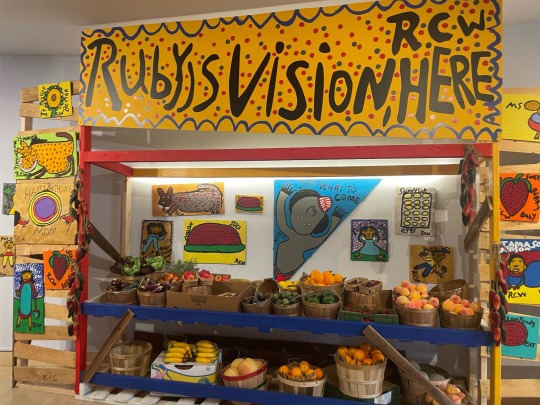


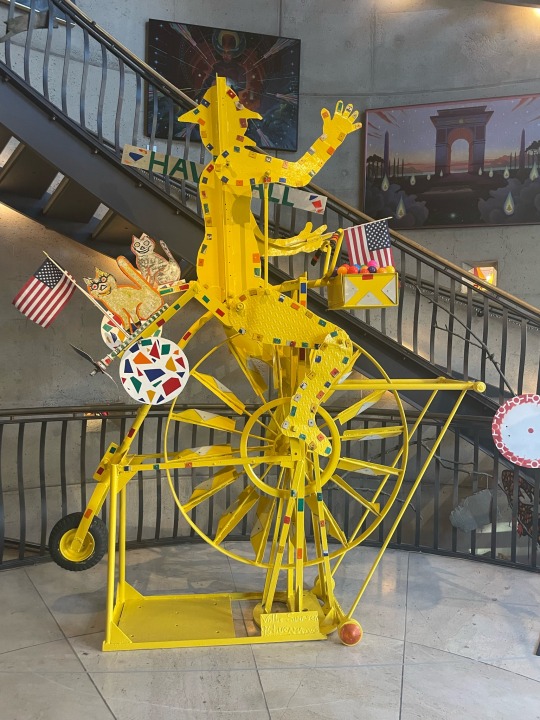
Very Cool stuff at the American visionary art museum
#and I got some paper ephemera for collage group#me talking#American visionary art museum#Robert gilkerson#Bob benson#ruby c Williams#Devon smith#Judith Scott#vollis simpson#Paul spooner
6 notes
·
View notes
Photo

Just got back from Baltimore. I highly recommend the American Visionary Art Museum. Kinetic sculptures? Yes.Upcycled materials? Yep. Disturbing imagery? Oh yeah. Severe mental illness channelled into compelling works of art? You bet! A display dedicated to flatulence located next to the bathrooms? Did you really need to ask? All this and probably the greatest (and most affordable) museum gift shop ever. Do yourself a favor and go.
4 notes
·
View notes
Text

1 note
·
View note
Text








December 21, 2022
The American Visionary Art Museum - Baltimore, MD
0 notes
Text




seen outside the american visionary art museum
0 notes
Text
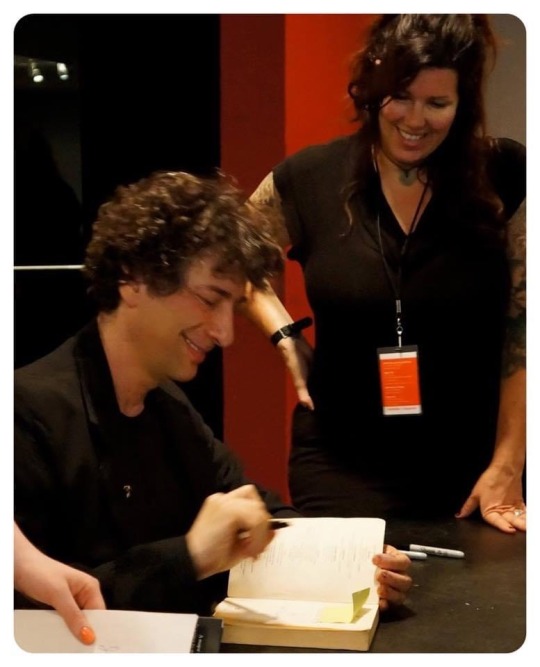
Celebrating the year 2024 with a 25% off sale on anything in the Neverwear shop- you don't need a code, it will come off at check out automatically. For some examples: this sale will make the $75 signed-by-Neil Dickens prints $56.25! a Mad Sweeney lucky coin will be $11.25 the embroidered Neil hat will be $14.21 Grateful for you, we donated to Meals on Wheels, BARCS (animal shelter in Baltimore) 2 public libraries, NAACP, American Visionary Art Museum, and more. Sale up until midnight ET Tues Jan 2, 2024 Here's a photo of me and the boss from ten years ago (I think?)
www.neverwear.net
624 notes
·
View notes
Text

Today is World AIDS day, which makes me reflect on the creative, vibrant and talented generation of people wiped out in their prime in the early days of the scourge – like pioneering American performance artist, photographer, one of the architects of no-budget DIY underground queer cinema and all-round twisted visionary to be mentioned in the same breath as Jean Genet, Andy Warhol, Kenneth Anger, the Kuchar brothers and James Bidgood, that flaming creature Jack Smith (14 November 1932 – 18 September 1989). To grasp the wild world of this “filth elder” and role model for the ages, I would point you to the exemplary 2006 documentary Jack Smith and the Destruction of Atlantis by Mary Jordan, which I watched on YouTube recently – but it has since been yanked down and seemingly isn’t streaming anywhere else! The doc featured a who’s who of American underground culture (like Gary Indiana, Mary Woronov, John Zorn, Mario Montez, Nick Zedd, Judith Malina, Holly Woodlawn and George Kuchar) reminiscing about their encounters with him. Smith was famously uncompromising and curmudgeonly and died destitute. As an exasperated John Waters recalls in the doc, Smith “bit every hand that could have fed him”. For example, Smith loathed the idea of art galleries or museums screening his work (“Who else was going to show ‘em?” Waters asks). However you cut it, Smith was an outrageous original and an integral figure in the aesthetic we now call “camp” or “kitsch.” We are forever in his debt!
#world aids day#world aids day 2024#jack smith#lobotomy room#flaming creatures#normal love#jack smith and the destruction of atlantis#kitsch#camp#punk#maria montez#underground cinema#underground queer cinema#performance art#john waters#lgbtqia#queer#avant garde
29 notes
·
View notes
Text

Henry Darger lived a quiet, solitary life as a janitor in Chicago, largely unnoticed by those around him. Yet, after his death in 1973, the world discovered that he had spent decades creating one of the most astonishing and enigmatic bodies of work ever known. Hidden in his small apartment was a 15,000-page manuscript titled "The Story of the Vivian Girls, in What Is Known as the Realms of the Unreal", accompanied by hundreds of vivid, surreal paintings. Darger’s secret world revealed a reclusive genius who blended innocence and darkness in equal measure.
Darger’s magnum opus tells the story of the Vivian Girls, child-like heroines who lead a rebellion against an evil empire that enslaves children. The narrative is sprawling and complex, interweaving themes of good versus evil, religion, and innocence lost. His accompanying artwork, often rendered on massive sheets of paper, is hauntingly beautiful. It features colorful depictions of fantastical battles, strange landscapes, and ethereal characters, blending childlike wonder with unsettling undertones.
Much of Darger’s work reflects his troubled life. Orphaned at a young age, he endured a childhood marked by neglect and abuse. These experiences likely influenced the dark and often violent imagery in his art. His obsession with protecting children, evident in the Vivian Girls' relentless fight against oppression, may stem from a deep sense of powerlessness he felt throughout his life.
What makes Darger’s story even more remarkable is that his work was discovered entirely by chance. His landlords, Nathan and Kiyoko Lerner, stumbled upon his treasure trove of art and manuscripts while clearing out his apartment after his death. Recognizing its value, they preserved his creations, introducing the world to a visionary who had spent his life in obscurity.
Today, Henry Darger’s work is celebrated in museums and galleries around the world, including the American Folk Art Museum in New York. His story resonates as a testament to the profound creativity that can flourish in solitude and the universal human need to express and process our experiences, no matter how hidden.
“Great art can emerge from the most unexpected places, and every story deserves to be found.” — Unknown
credit ~ Weird but True
14 notes
·
View notes
Text
For #WorldBearDay:
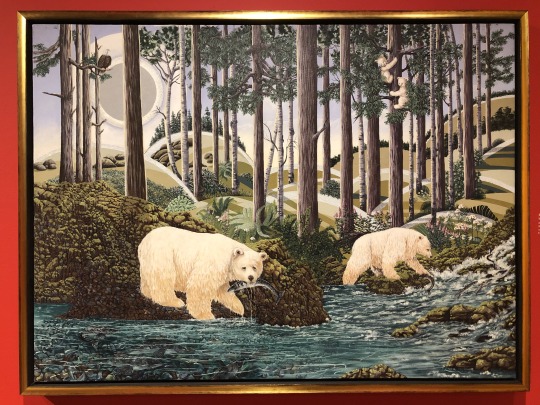
White Spirit Bears by Apache elder Judy Tallwing (b. 1945), 2012. Resin/silver/garnet/sterling/acrylic/copper/diamonds on canvas. From American Visionary Art Museum's "The Secret Life of Earth" show in 2019.
BTW "Spirit Bear" aka "Ghost Bear" aka Moksgm'ol isn't a Polar Bear; it's a rare white morph (NOT albino) of the Kermode Bear, a subspecies of American Black Bear (Ursus americanus kermodei) endemic to coastal British Columbia. It's BC's official mammal & sacred to the region's First Nations peoples.

Mother and cub at Spirit Bear Lodge, Klemtu, BC. Image: Wikimedia Commons.
#Spirit Bear#Ghost Bear#Moksgm'ol#Kermode Bear#American Black Bear#bear#bears#World Bear Day#contemporary art#2010s#American art#Indigenous art#American Visionary Art Museum#The Secret Life of Earth#museum visit#exhibition#painting#mixed media#wildlife art#animal holiday#zoology#mammalogy#taxonomy#color morph#animals in art
117 notes
·
View notes
Text
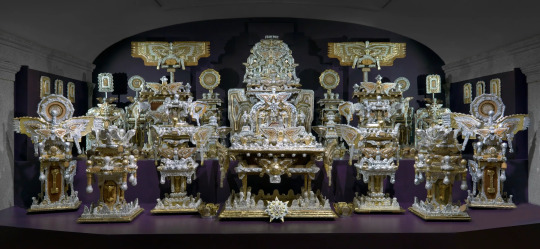
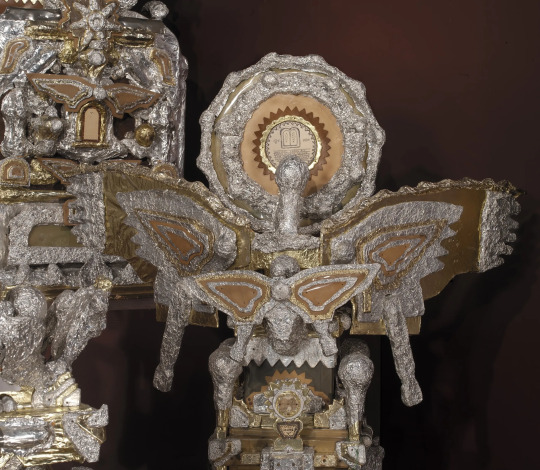
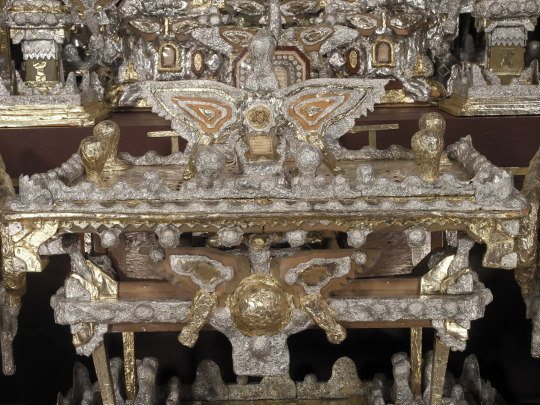
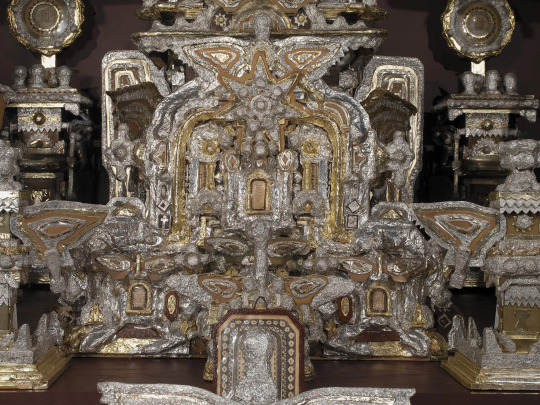
No, you know what? While I'm all fired up about modern art and outsider art, let me introduce you to the works of James Hampton.
Pictured above is his monumental Throne of the Third Heaven of the Nations' Millennium General Assembly.
With scant education and no formal art education, James Hampton made these pieces out of his intense religious fervor and his own desire to create:
In 1950, Hampton rented a garage on 7th street in northwest Washington [DC]. Over the next 14 years, Hampton built a complex work of religious art inside the garage with various scavenged materials such as aluminum and gold foil, old furniture, pieces of cardboard, light bulbs, jelly jars, shards of mirror and desk blotters held together with tacks, glue, pins and tape. The complete work consists of 180 objects, many of them inscribed with quotes from the Book of Revelation. The centerpiece of the exhibit is a throne, seven feet tall, built on the foundation of an old maroon-cushioned armchair with the words "Fear Not" at its crest. The throne is flanked by dozens of altars, crowns, lecterns, tablets and winged pulpits. Wall plaques on the left bear the name of apostles and those on the right list various biblical patriarchs and prophets such as Abraham and Ezekiel. The text The Throne of the Third Heaven of the Nations' Millennium General Assembly was written on the objects in Hampton's handwriting.
He constructed all his pieces from materials he found or scavenged himself, "such as aluminum and gold foil, old furniture, pieces of cardboard, light bulbs, jelly jars, shards of mirror and desk blotters held together with tacks, glue, pins and tape."
It's not clear if Hampton himself regarded himself as an artist, a visionary, a prophet, or none of the above. His work, however, is regarded as art in the same way that Michelangelo's Pieta is regarded as art: art of a religious subject or concept.
He also "kept a 108-page loose-leaf notebook titled St James: The Book of the 7 Dispensation. Most of the text was written in an unknown script that remains undeciphered. ... Some of the text was accompanied by notes in English in Hampton's handwriting. In the notebook, Hampton referred to himself as St. James with the title 'Director, Special Projects for the State of Eternity' and ended each page with the word 'Revelation'."
The art was not discovered until after Hampton's death in 1964, when the owner of the garage, Meyer Wertlieb, came to find out why the rent had not been paid. He knew that Hampton had been building something in the garage. When he opened the door, he found a room filled with the artwork. Hampton had kept his project secret from most of his friends and family. His relatives first heard about it when his sister came to claim his body. When Hampton's sister refused to take the artwork, the landlord placed an advertisement in local newspapers. Ed Kelly, a sculptor, answered the advertisement and was so astounded by the exhibit, he contacted art collector Alice Denney. Denney brought art dealers Leo Castelli and Ivan Karp, and artist Robert Rauschenberg, to see the exhibit in the garage. Harry Lowe, the assistant director of the Smithsonian Art Museum, told the Washington Post that walking into the garage "was like opening Tut's tomb."
His work is now on display at the Smithsonian American Art Museum.
106 notes
·
View notes
Text
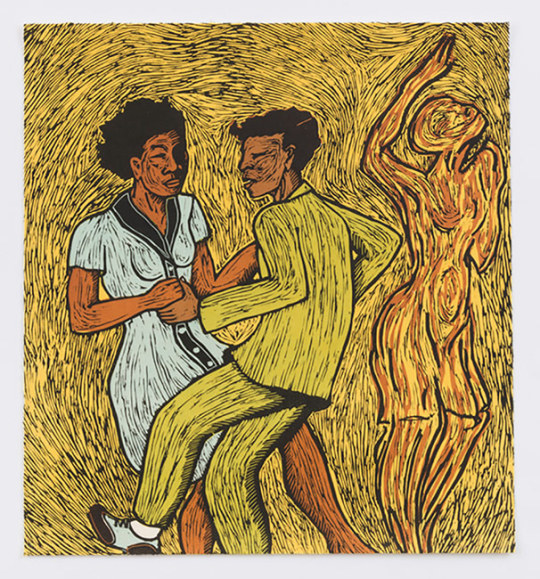



Prints by Alison Saar (b 1956)
“Alison Saar’s decades-long explorations of the African American experience as filtered through her personal symbolism connect to today’s essential conversations around racial reckoning and cultural belonging,” said Amy Gilman, director of the Chazen. “The museum believes this visionary work is crucial viewing for all of our diverse communities and audiences.”
Saar, who is based in Los Angeles, where she was born and raised, is known for her incisive sculptures, multimedia installations, and printmaking that reflect a broad range of creative influences, including ancient Greek and African forms and American folk art. In all of Saar’s wide-ranging work the artist has unflinchingly tackled complex personal and political subject matter with an eye towards accessibility and meaningful exchange.
https://www.artandobject.com/.../powerful-prints-alison...
29 notes
·
View notes
Text
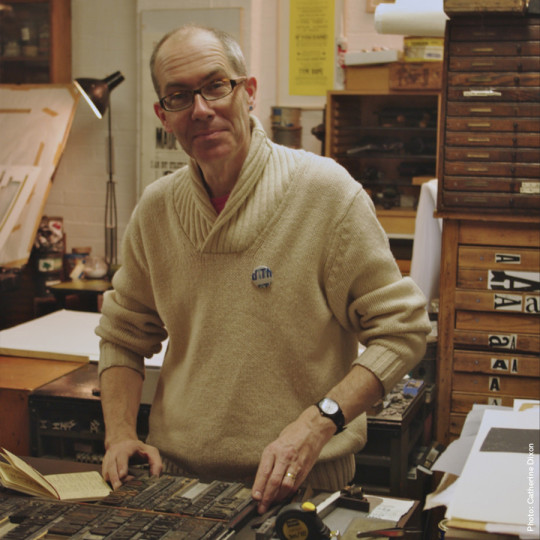
Phil Baines, who has died aged 65 of multiple system atrophy, was one of the most distinctive voices in contemporary British graphic design. His work included books, posters, art catalogues and lettering for three important London monuments – the memorial to the Indian Ocean tsunami in the grounds of the Natural History Museum and the 7 July memorials in Hyde Park and Tavistock Square, commemorating the victims of the 2005 London bombings. These projects point to Baines’s defining attributes: a scholarly appreciation of letterforms, a deep-rooted respect for materials and a love of collaboration.
Such attributes can also be seen in Baines’s cover designs for the Penguin Great Ideas series (2004-20), works by “great thinkers, pioneers, radicals and visionaries” that gave him a canvas on which to display his typographic philosophy. The Saint Augustine – Confessions of a Sinner cover, for instance, uses ancient ecclesiastical letterforms and yet looks superbly modern. For Chuang Tzu — The Tao of Nature, Baines arranged letters to suggest a butterfly in flight. David Pearson, one of two art directors for the series, described how his “often-oblique approach gave the series a crucial added dimension”.
Born in Kendal, Cumbria, Phil was one of the three children of Martin Baines, a construction contract manager, and Joan (nee Quarmby), a horticulturalist. Growing up in a Roman Catholic household, he began studies for the priesthood at Ushaw College, County Durham. During the holidays from Ushaw he worked at the Guild of Lakeland Craftsmen, Windermere, and from there his interest and confidence in art grew.
At the start of his fourth year, he quit Ushaw, and in 1980 began a year’s study on the foundation course at Cumbria College of Art and Design. In 1982 he moved to London and enrolled on the graphic design course at St Martin’s School of Art (now Central Saint Martins), where he met Jackie Warner, whom he married in 1989, and where he was among a talented cohort, many of whom went on to study, as he did, at the Royal College of Art.
Richard Doust, then leader of the first-year course at St Martins, recalled the portfolio Baines submitted for admission: “I was so excited … I was sure he was going to be someone very special. He quickly established his individuality. He made typography and particularly letterpress his own territory.”
Baines was fiercely individual – he did not join schools of thought or align himself with fashionable camps. Instead, he built a creative practice based on his belief in the “humanist” qualities of the English typographic tradition.
His contemporaries were using the computer to bring a new complexity to graphic communication. Smart software allowed for the overlapping and interweaving of text in ways that echoed the ecclesiastical manuscripts that Baines admired so much. He was no Luddite, and used the computer himself, yet his work invariably retained an element of the handmade.
Paradoxically, his work was greatly admired by the new generation of digital designers. Neville Brody, for instance, included Baines’s work in his experimental typography publication FUSE, produced to demonstrate the malleability of the new digital typography. Baines’s work does not look out of place among the other contributors, many of them American typography radicals whose multi-layered layouts were driven by modish theories of deconstruction and poststructuralism.
In 1988 he returned to Central Saint Martins (CSM), as part of the faculty. In staff meetings his willingness to say the unsayable was a frequent cause for consternation among colleagues. To his students he preached a doctrine of “object-based learning”, a typically contrarian notion in the age of screen-based and virtual graphic design. He was appointed a professor in 2006 and retired in 2020 as emeritus professor.
Despite his commitment to teaching, Baines did not give up his work for clients. As well as designing books for leading publishers, he worked for the Crafts Council and the Ditchling Museum of Art + Craft, and designed the signage for CSM’s King’s Cross campus. He designed exhibition catalogues for Matt’s Gallery, south-west London, relishing the creative three-way collaboration that existed between the gallery’s director, Robin Klassnik, exhibiting artists and himself.
He wrote books that contributed to the understanding of visual communication: Type & Typography (with Andrew Haslam, 2002), Signs: Lettering in the Environment (with Catherine Dixon, 2003) and Penguin by Design: A Cover Story 1935-2005 (2005), the last of which helped establish Penguin cover art as one of the most important bodies of graphic art in British design history.
With Dixon, he co-curated the Central Lettering Record, an archive of typographic history housed at CSM, and in November 2023 his work was celebrated in an exhibition, Extol: Phil Baines Celebrating Letters, at the Lethaby gallery, CSM. He was appointed as the Royal Mint advisory committee’s lettering expert in 2016, and reappointed in 2021 to advise on the integration of lettering on new coins and medals, with consideration given to special issues and the accession of King Charles to the throne. For this work, in 2023 he was awarded the Coronation medal.
Baines was an enthusiastic runner and cyclist, and loved music, especially the Manchester post-punk band the Fall. He was a collector of signs, lettering, and railwayana, and built his own studios at his home in Willesden Green, north-west London. A few years before his retirement he moved to Great Paxton, Cambridgeshire, where he took up bellringing.
He is survived by Jackie and their two daughters, Beth and Felicity, and by his father.
🔔 Philip Andrew Baines, graphic designer, born 8 December 1958; died 19 December 2023
Daily inspiration. Discover more photos at Just for Books…?
9 notes
·
View notes